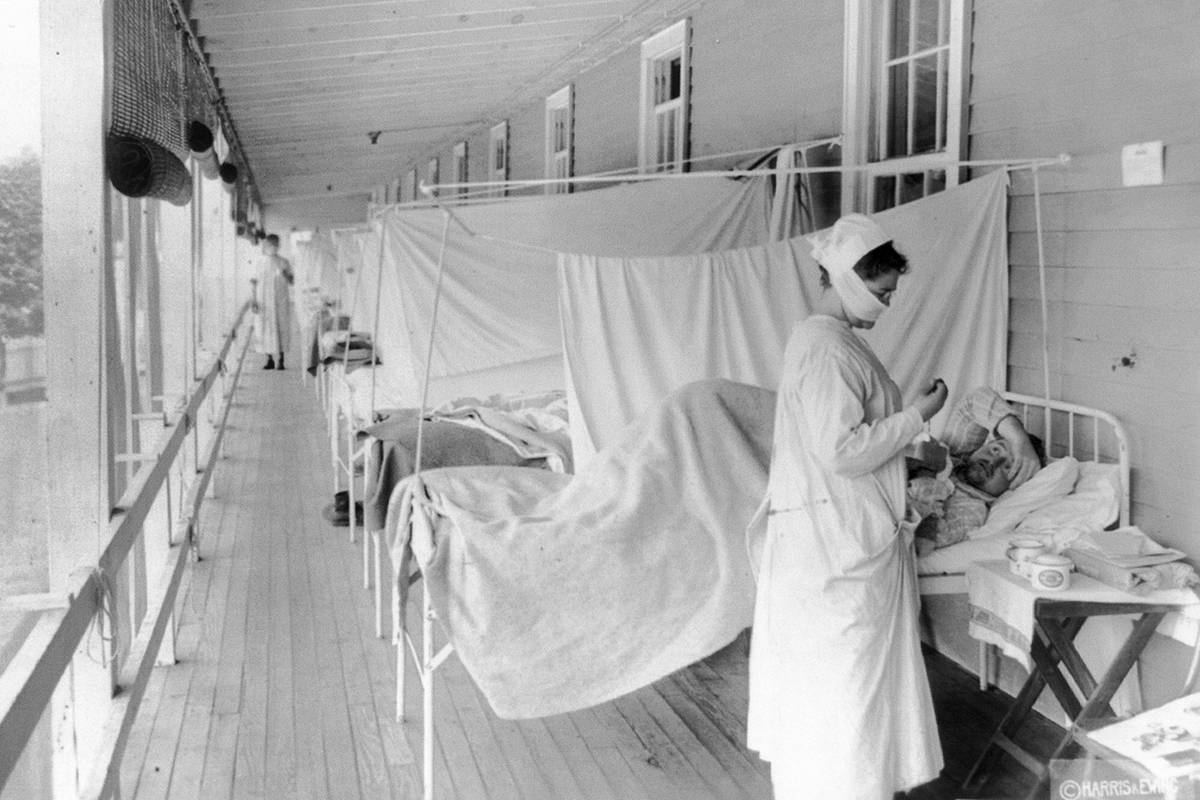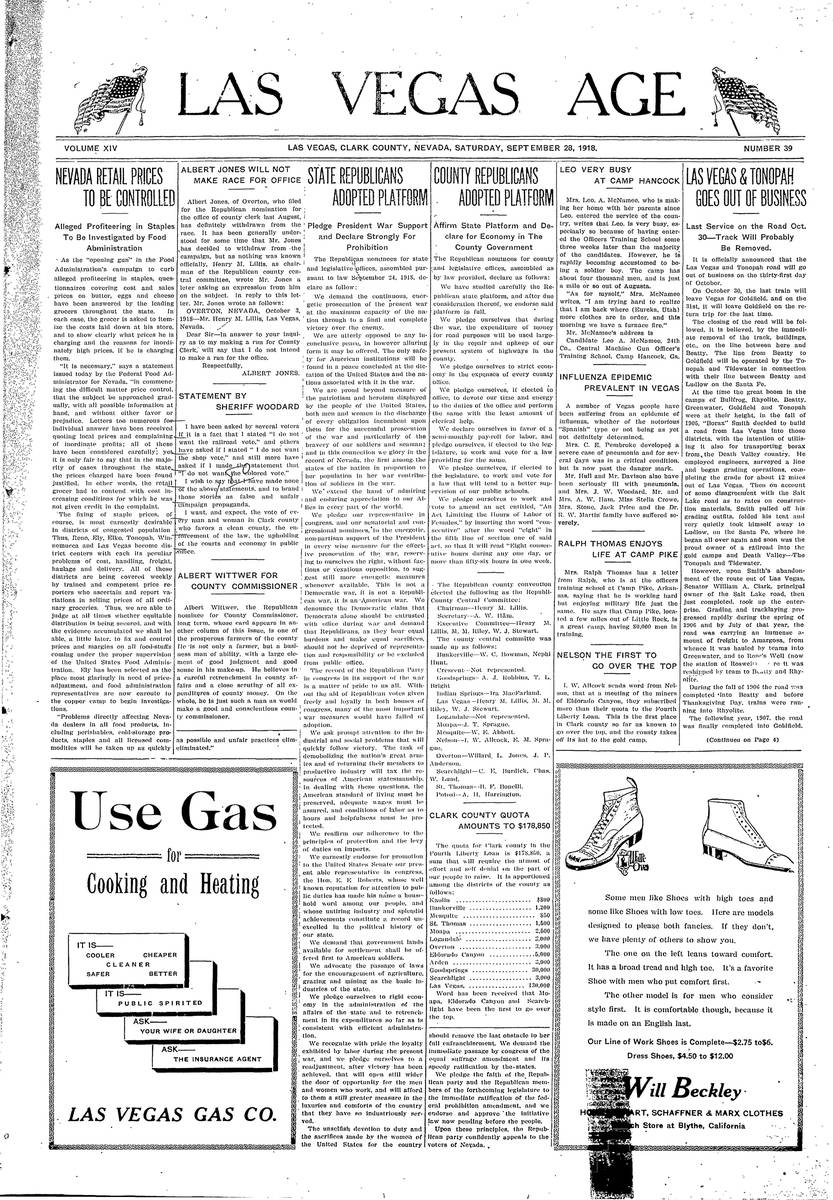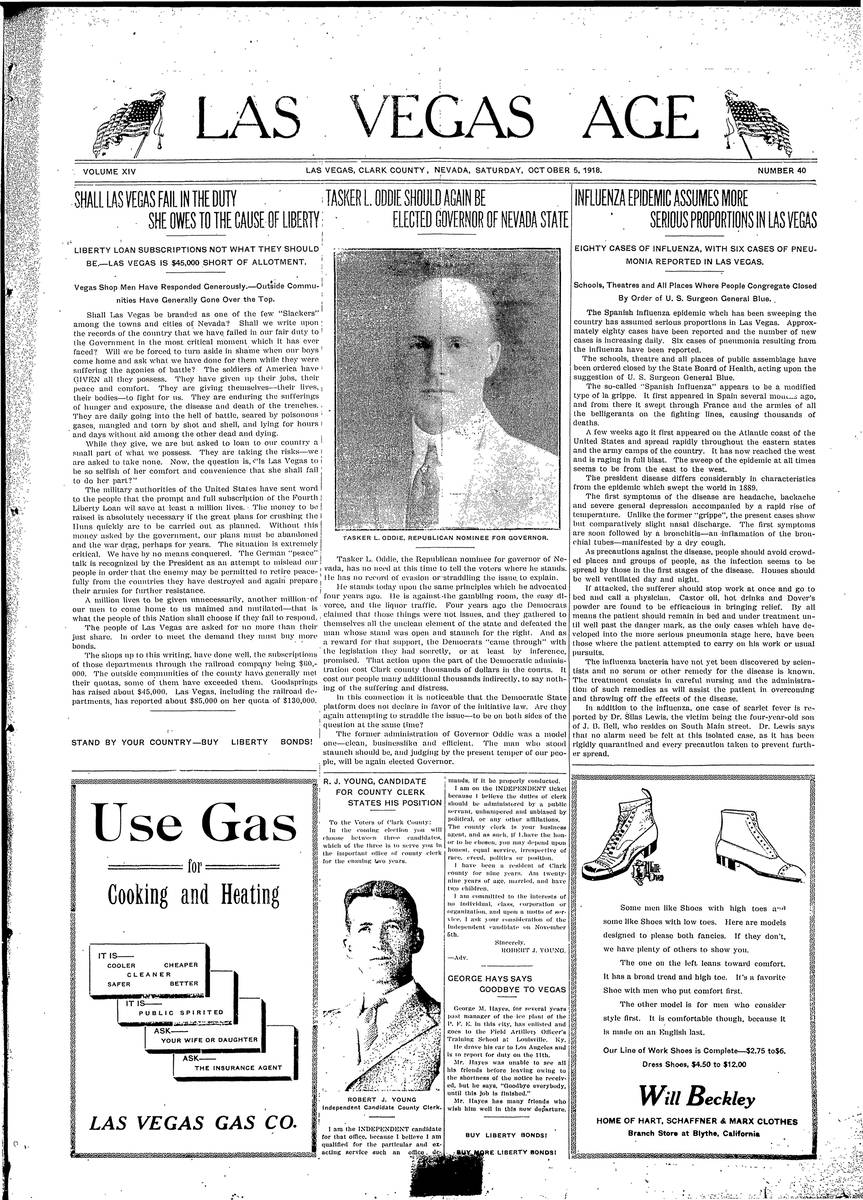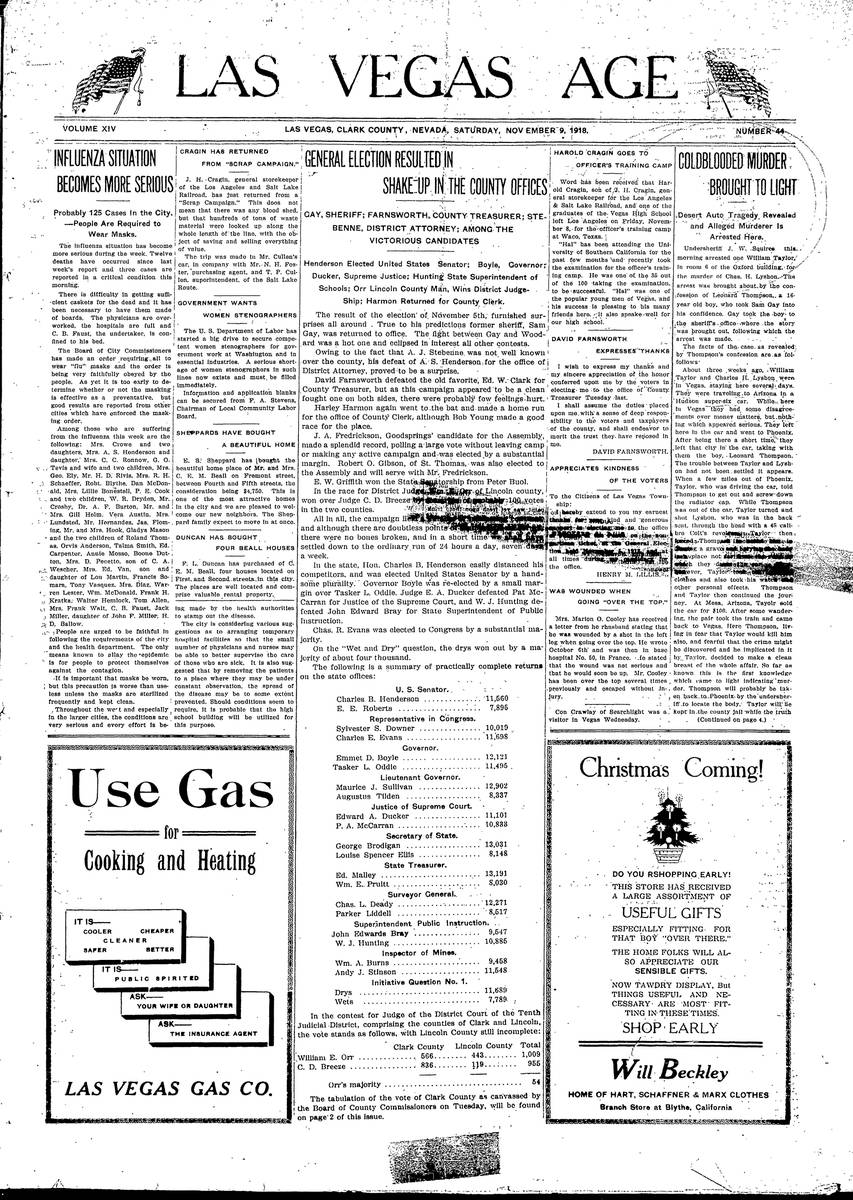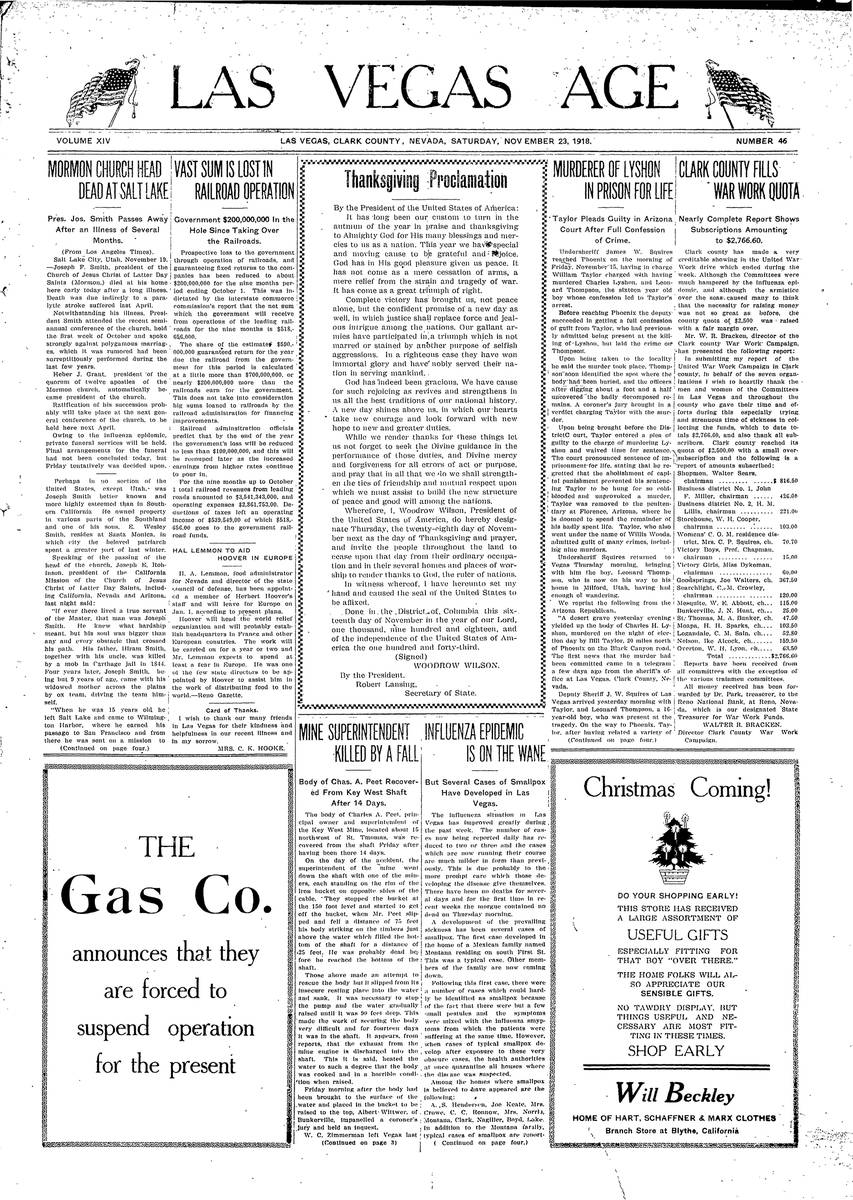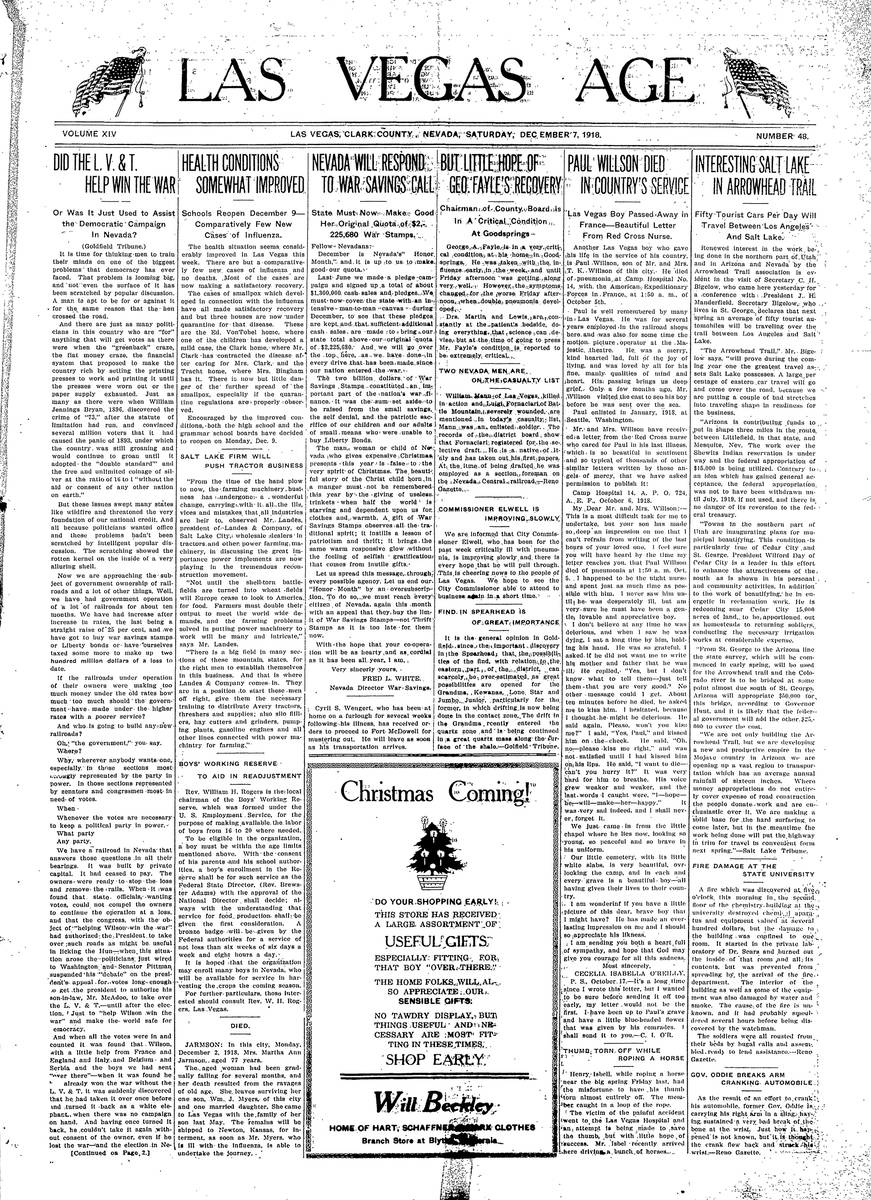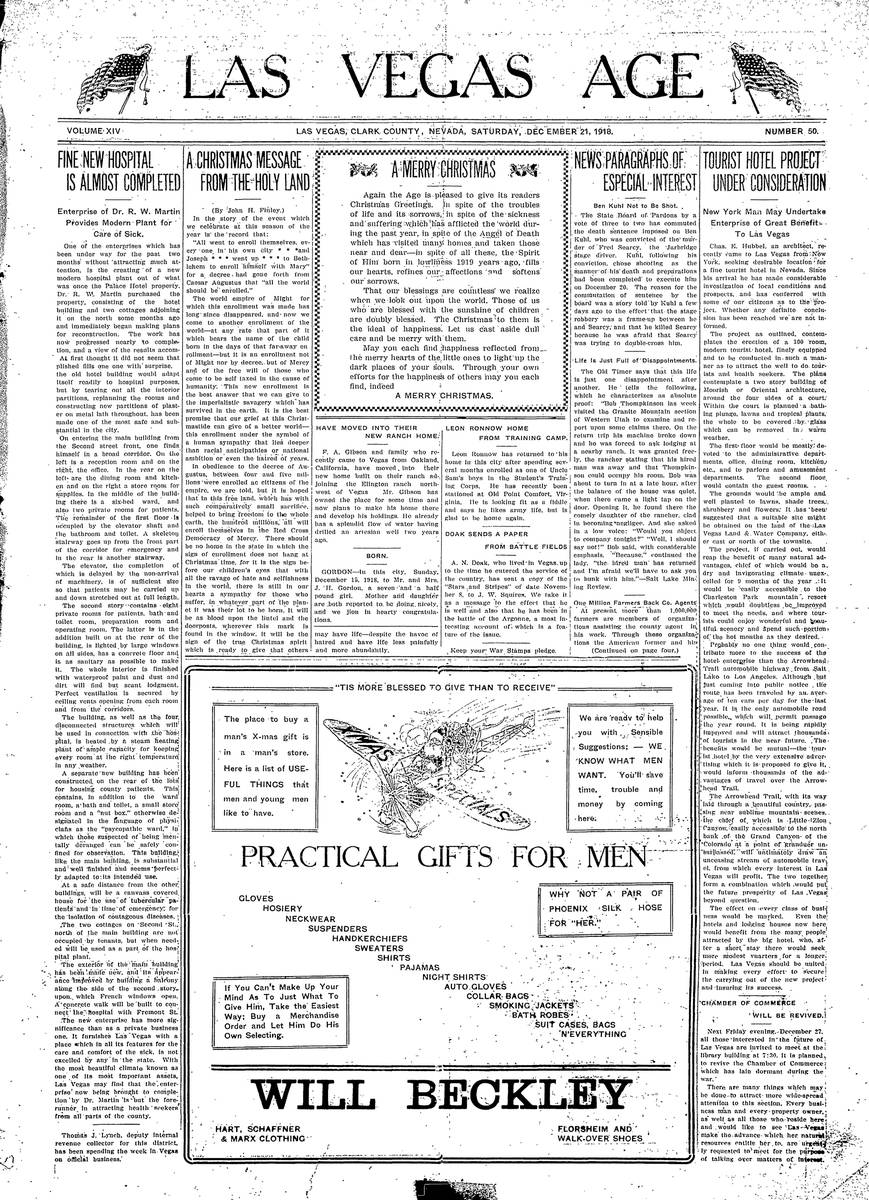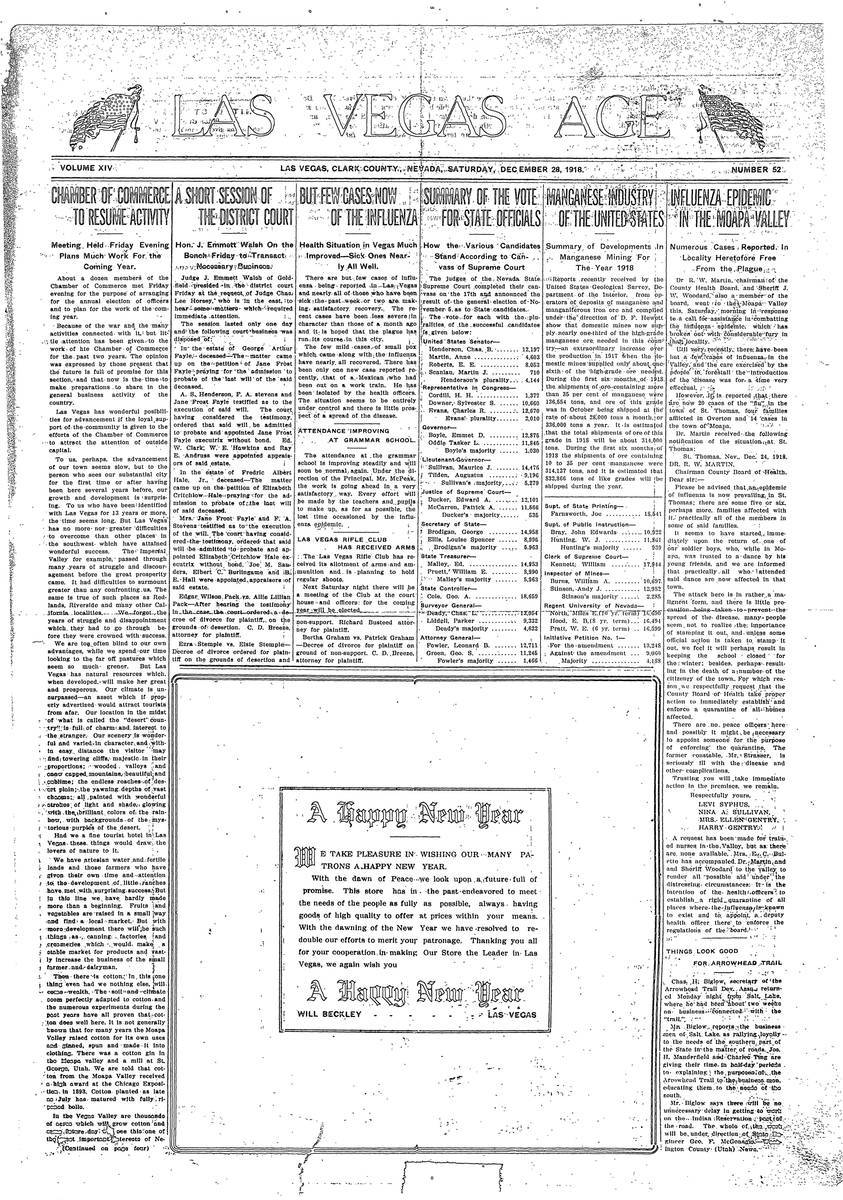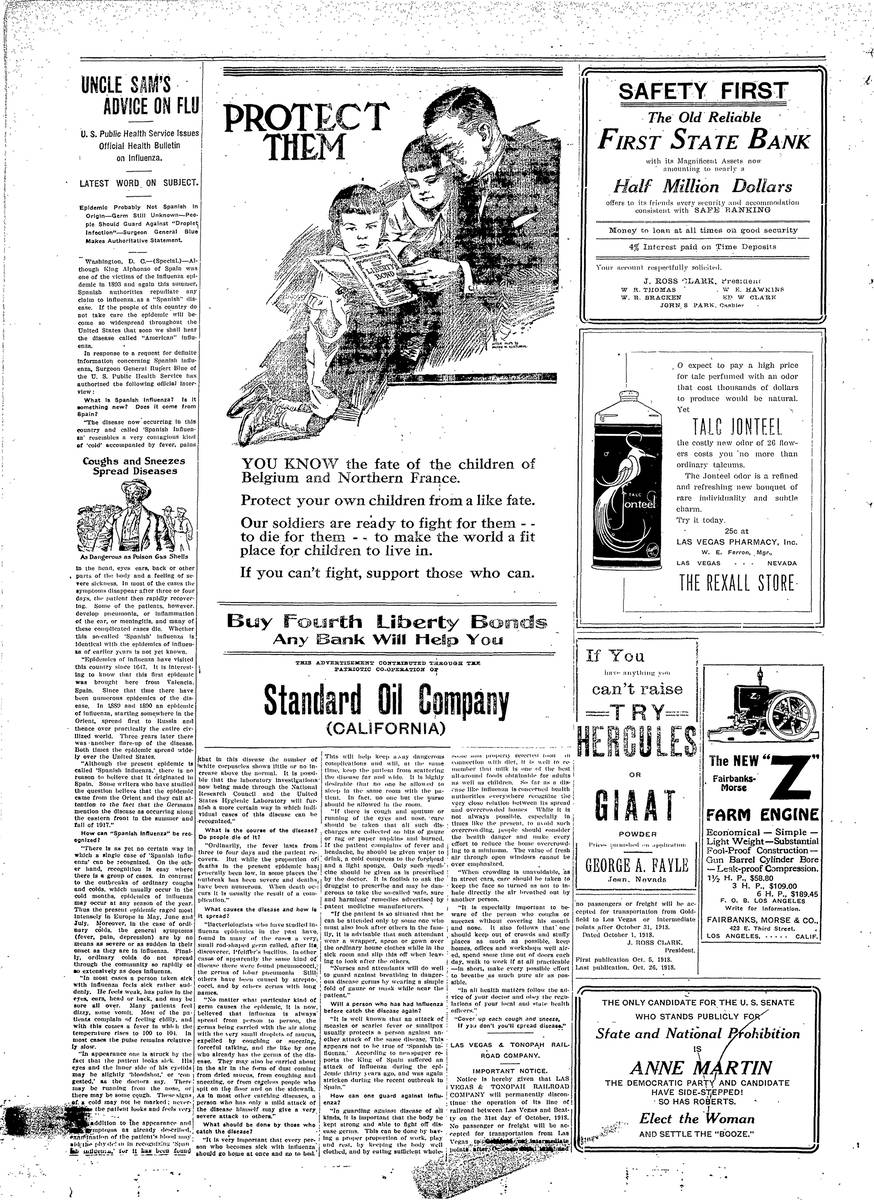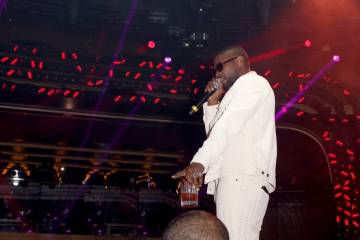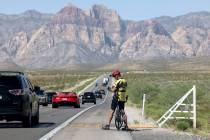Las Vegas, US coronavirus closures mirror 1918 pandemic
The infections hit Las Vegas hard and fast.
More and more people became sick, schools and other gathering spots were ordered closed, and locals were told to avoid groups and wear masks.
Doctors were overworked, hospitals filled up, and it was difficult getting enough caskets to hold the dead. Even the undertaker was bedridden.
The threat? The Spanish flu.
Raging around the globe in 1918 and 1919, the influenza outbreak infected an estimated one-third of the world’s population, including many people in Las Vegas, a desert outpost of just 2,000 or so back then.
The pandemic sparked shutdowns, warnings and pushback around the U.S. that are eerily similar to the fallout from the coronavirus outbreak in Las Vegas and other cities more than 100 years later.
“Suddenly it’s so relevant,” Christopher Nichols, director of Oregon State University’s Center for the Humanities, said of the World War I-era outbreak.
The coronavirus pandemic has upended daily life, brought much of the U.S. economy to a halt with sweeping business closures and stay-at-home orders, and prompted many people to wear masks when they venture outside. Las Vegas’ main financial engine, tourism, has effectively shut off amid the turmoil, and job losses in Nevada have soared to record levels.
By all accounts, the influenza outbreak did not grind the U.S. to a standstill. But many of its spillover effects are on replay, including in Las Vegas, where “just about everything” shut down a century ago, said Bob Stoldal, chair of the state Board of Museums and History.
Several people were even arrested for not wearing masks and then reprimanded by a judge, according to Stoldal.
“It was nearly a panic in this town,” he said.
‘Caskets for the dead’
On Sept. 28, 1918, the Las Vegas Age newspaper had front-page stories about politics, military life and alleged retail price gouging.
It also reported an influenza epidemic was “prevalent” in Las Vegas, though it wasn’t clear whether “the notorious ‘Spanish’ type” was to blame.
Soon enough, the “Spanish influenza epidemic” sweeping the nation had reached “serious proportions in Las Vegas,” the Age wrote Oct. 5.
About 80 people had become sick, the number of infections was rising daily, and the State Board of Health ordered schools, the theater and “all places of public assemblage” to close.
“As precautions against the disease, people should avoid crowded places and groups of people,” the Age wrote.
The paper declared two weeks later that the epidemic was “on the decline” — around 140 cases had been reported in Las Vegas — but again wrote in November that the outbreak had “become more serious.”
There was “difficulty in getting sufficient caskets for the dead,” physicians were “overworked,” the hospitals were “full” and undertaker C.B. Faust was “confined to his bed.”
The paper also ran a list of do’s and don’ts from health officer Dr. R.W. Martin, who told readers to keep clean, brush their teeth, beware of “sure cures,” not stand close to someone while talking, and, as ordered by city commissioners, wear a mask.
‘Violent exercise’
The pandemic continued its ups and downs. The Age declared Nov. 23 that the crisis was “on the wane,” with just a few cases reported daily and no deaths for several days.
Still, the county health board suspended all public dances because of the outbreak, the paper reported a month later, adding that such events “are a particularly dangerous form of amusement” because of the “violent exercise,” body heat and sweating.
A week later, the Age wrote that officials went to the Moapa Valley northeast of Las Vegas to help battle the influenza, which had “broken out with considerable fury” there.
In the end, the pandemic officially killed about 40 people in Southern Nevada, and Nevada saw almost 4,000 influenza cases in 1918, the Las Vegas Review-Journal previously reported.
Those numbers, however, may be artificially low. Flu cases were not required to be reported at the time, former Nevada State Museum staffer Ilana Short has said, and the death toll did not account for deaths from pneumonia that may have been linked to the flu.
‘We’ve done this before’
All told, the influenza outbreak was the worst pandemic in recent history, killing an estimated 50 million people globally, including about 675,000 in the U.S., according to the Centers for Disease Control and Prevention.
Cities around the country had shutdowns at the time, with schools, restaurants, saloons and churches going dark, John Barry, author of “The Great Influenza: The Story of the Deadliest Pandemic in History,” told the Review-Journal this week.
But the actions back then “were generally less extreme than what we’re doing now,” he said, noting that plenty of people stopped going to work because they were sick, were scared to fall ill or were caring for someone.
Just as protesters in Nevada and other states have opposed closures aimed at containing the new coronavirus — a pushback supported by President Donald Trump — people resisted efforts to fight the pandemic of a century ago as well.
A so-called Anti-Mask League was formed to protest wearing masks in public, Oregon State’s Nichols said.
Businesses also pushed back against shutdowns, though in a number of cases, communities that reopened suffered another wave of infections, according to J. Alexander Navarro, assistant director of the University of Michigan’s Center for the History of Medicine.
In Denver, for instance, people came out to celebrate the end of the war, and flu cases and deaths started to climb soon afterward, he said.
Las Vegas, now with more than 2 million people in the metropolitan area, bears almost no resemblance to the Las Vegas of a century ago. But the valley has largely shut down over the coronavirus, infections have soared and, as museums chairman Stoldal noted, people are getting “almost identical” instructions that were handed down during the global flu outbreak.
“We’ve done this before — 100 years ago,” he said.
Contact Eli Segall at esegall@reviewjournal.com or 702-383-0342. Follow @eli_segall on Twitter. Review-Journal staffer Mike Shoro contributed to this report.



